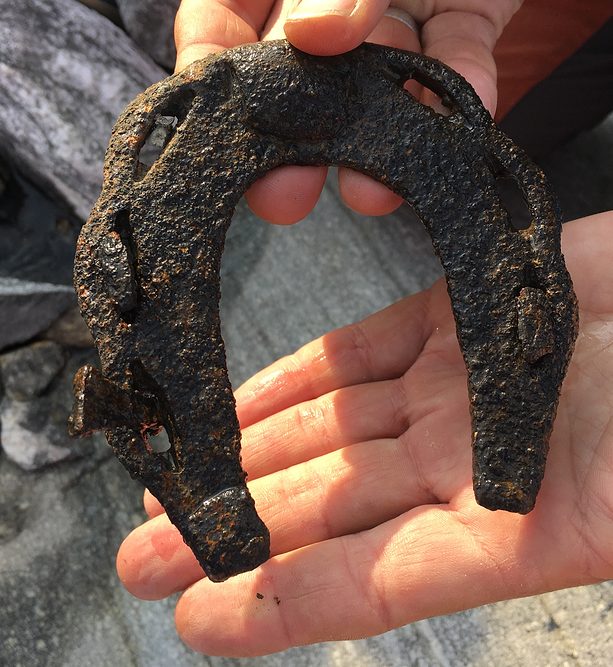An ancient horseshoe was recently discovered at the Lendbreen ice patch in the mountains of southern Norway. Secrets of the Ice researchers uncovered the shoe from beneath a rock after the ice that was preserving it had melted.
The shoe is quite heavy, according to Lars Holger Pilo, a researcher from Oppland County Council. Due to its weight, Pilo doesn’t think the ice carried this artifact very far from where it was dropped.
“The horseshoe probably tells us where a packhorse passed over the ice 800-900 years,” Pilo told American Farriers Journal.
The shoe has three nail holes on each branch, and three nails remain intact. Organic matter was noted on one of the nails, and this could be part of the horse’s hoof wall. The discovery was made in September 2018, so the shoe is still on its way to a museum for possible DNA-analysis. The testing would inform researchers of the type of packhorse used in the mountains of Norway nearly 1,000 years ago.
In addition to finding the horseshoe, researchers also found bones from two packhorses in the ice at this site. The set of bones with the horse’s skull is from the 15th century while the other set of bones is about 1,500 years old. Researchers have also found quite a lot of horse manure. This has been dated to the Viking age and the Medieval period.
“There are also other horseshoes and horseshoe nails that mark the trail,” says Pilo, “but none as fine as the one we published on Facebook recently.”
Pilo also comments on the size of the horseshoe and how Medieval horseshoes are smaller than horseshoes today, which informs researchers of the size differences between horses then and now.
This is one of several ancient horse-related finds. Recently, there has been a discovery of rare Roman horseshoes found in Vindolanda, Northern England. The discovery is extremely rare because the complete set of hipposandals were unearthed. It could be from a burial site of a beloved horse. Also, the shoes were so well preserved, treads were visible to keep the horse from slipping. These hipposandals were more of a slip-on shoe rather than a nailed-on shoe.
The discovery of the Siberian foal followed, found in the Batagai depression in the Yakutia region of Russia. The bog preserved the young horse so well, its fur, hooves and stomach contents were able to be analyzed. The topic of cloning was breeched but has not been made a success at this time. The cause of death was deemed drowning, as the foal most likely fell into a small well. It was only 20 days old.







